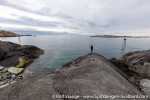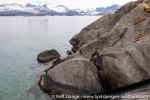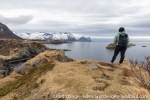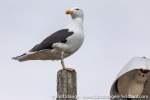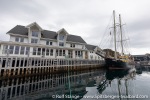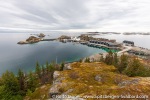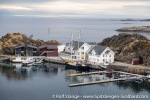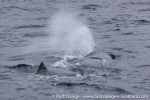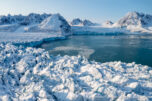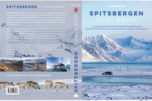-
current
recommendations- Liefdefjord
New page dedicated to one of Spitsbergen's most beautiful fjords. Background information and many photos.
- New Spitsbergen guidebook
The new edition of my Spitsbergen guidebook is out and available now!
- Liefdefjord
New page dedicated to one of Spitsbergen's most beautiful fjords. Background information and many photos.
Page Structure
-
Spitsbergen-News
- Select Month
- May 2025
- April 2025
- March 2025
- February 2025
- January 2025
- December 2024
- November 2024
- October 2024
- September 2024
- August 2024
- July 2024
- June 2024
- May 2024
- April 2024
- March 2024
- February 2024
- January 2024
- December 2023
- November 2023
- October 2023
- September 2023
- August 2023
- July 2023
- June 2023
- May 2023
- April 2023
- March 2023
- February 2023
- January 2023
- December 2022
- November 2022
- October 2022
- September 2022
- August 2022
- July 2022
- June 2022
- May 2022
- April 2022
- March 2022
- February 2022
- January 2022
- December 2021
- November 2021
- October 2021
- September 2021
- August 2021
- July 2021
- June 2021
- May 2021
- April 2021
- March 2021
- February 2021
- January 2021
- December 2020
- November 2020
- October 2020
- September 2020
- August 2020
- July 2020
- June 2020
- May 2020
- April 2020
- March 2020
- February 2020
- January 2020
- December 2019
- November 2019
- October 2019
- September 2019
- August 2019
- July 2019
- June 2019
- May 2019
- April 2019
- March 2019
- February 2019
- January 2019
- December 2018
- November 2018
- October 2018
- September 2018
- August 2018
- July 2018
- June 2018
- May 2018
- April 2018
- March 2018
- February 2018
- January 2018
- December 2017
- November 2017
- October 2017
- September 2017
- August 2017
- July 2017
- June 2017
- May 2017
- April 2017
- March 2017
- February 2017
- January 2017
- December 2016
- November 2016
- October 2016
- September 2016
- August 2016
- July 2016
- June 2016
- May 2016
- April 2016
- March 2016
- February 2016
- January 2016
- December 2015
- November 2015
- October 2015
- September 2015
- August 2015
- July 2015
- June 2015
- May 2015
- April 2015
- March 2015
- February 2015
- January 2015
- December 2014
- November 2014
- October 2014
- September 2014
- August 2014
- July 2014
- June 2014
- May 2014
- April 2014
- March 2014
- February 2014
- January 2014
- December 2013
- November 2013
- October 2013
- September 2013
- August 2013
- July 2013
- June 2013
- May 2013
- April 2013
- March 2013
- February 2013
- January 2013
- December 2012
- November 2012
- October 2012
- September 2012
- August 2012
- July 2012
- June 2012
- May 2012
- April 2012
- March 2012
- February 2012
- January 2012
- December 2011
- November 2011
- October 2011
- September 2011
- August 2011
- May 2011
- April 2011
- March 2011
- February 2011
- January 2011
- December 2010
- November 2010
- September 2010
- August 2010
- July 2010
- June 2010
- May 2010
- April 2010
- March 2010
- February 2010
- November 2009
- October 2009
- August 2009
- July 2009
- June 2009
- May 2009
- April 2009
- March 2009
- February 2009
- January 2009
- December 2008
- November 2008
- October 2008
- August 2008
- July 2008
- June 2008
- May 2008
- April 2008
- March 2008
- February 2008
- April 2000
- Select Month
-
weather information
-
Newsletter

| Guidebook: Spitsbergen-Svalbard |
Home →
Yearly Archives: 2023 − News
Cloudberry found in Colesdalen
The news section on this website has been a bit neglected the last couple of months. This is about to change now, as the travelling season is over, during which there was a clear focus on the travel blog, for obvious reasons.
Let’s start with a little article about an interesting discovery within botany, which seems harmless but nevertheless has a bit of an unpleasant tatse to it. Cloudberries were found in Colesdalen, about 20 km southwest of Longyearbyen – with fruits. The remarkable discovery was made by Stein Tore Pedersen from Longyearbyen, who was there on a private tour, as the Norwegian Polar Institute wrote.
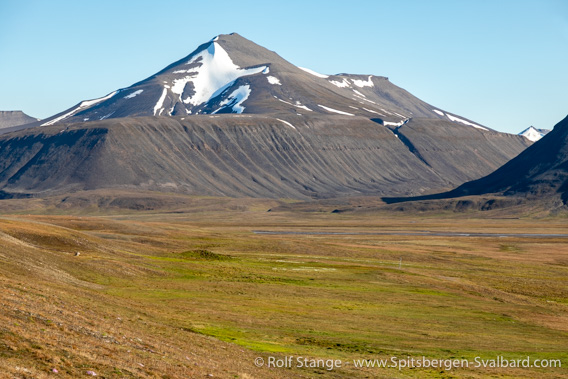
Colesdalen. It is safe to assume that there are cloudberry plants somewhere in this photo 🙂.
The fruits of the cloudberry are rich in vitamines and well known from mainland Scandinavia, where they are very popular. In Spitsbergen, cloudberries were found for the first time around 1908 by botanist Hanna Resvoll-Dieset, but this is now the first time that hard evidence for fruits could be secured. There are stories about earlier finds of cloudberry fruits, but in those cases, the evidence was quickly eaten by the finder. Something that is, by the way, not allowed: in Spitsbergen, all vegetation is generally protected and no plants or parts of plants may be collected. This includes cloudberry fruits. Only mushrooms and seaweed may be collected.
It is assumed that this first discovery of cloudberry fruits is connected to the record-warm temperatures of large parts of the last summer and thus to climate change, which is faster in large parts of the polar areas than elsewhere in the world.
Polar bear shot in Krossfjord
A polar bear was shot on Friday (05 August) evening in Krossfjord, while it tried to get into a hut where there were several persons insisde. It is said that the group tried to scare the polar bear away without success.
The incident is now under investigations. Further details have not yet been released at the time of writing.

Polar bear in Krossfjord (archive image).
July temperatures in Spitsbergen warmer than “arctic”
There are several definitions for the Arctic, depending on context. When it is a bout climate, then the southern boundary is usually the 10 degree july isotherm. Sounds technical? Maybe. But it makes sense: when the average temperature of the warmest month – July – is warmer than 10 degrees, then there will be shrubs or even trees. More than tundra, which is the typical vegetation for the ice-free land areas of the Arctic.
There are no shrubs or even trees in Spitsbergen (don’t get fooled with the polar willow and the dwarf birch, they are not really trees), but for the first time in history, local meteorological stations have now in July recorded a mean temperature that doesn’t really qualify as „high arctic“ anymore. 10.1 degrees centigrade were measured at the airport and 10 degrees in Pyramiden. At the airport, the monthly average in July was as much as 3.1 degrees above the long-term average, according to the Norwegian Polar Institute as quoted by Barentsobserver.

In July, tourists and locals could enjoy real summer weather in Spitsbergen, with temperatures far beyond expectation. For the regional climate, this is not good news, however: warming is continuing rapidly, with temperature records being broken on a regular basis.
It will not happen really soon that you can make a walk in the forest in Spitsbergen, but the warming trend as such is clear: during the meteorological period from 1991-2020, the average temperature for the summer months from June to August was, at the airport, 5.5°C, but looking just at the last decade gives a value of 6.4 degrees, according to the Norwegian Polar Institute. Warming is faster in the Arctic than almost anywhere else on the planet, due to regional effects such as the loss of sea ice.
This leads to worrying effects that may well even further amplify the warming process: scientists have recently found methane springs in areas previously covered by now retreating glaciers. Through these springs, large volumes of gases, mainly methane, can escape into the atmosphere, while they were stored in the underground as long as it was glacier covered. As a greenhouse gas, methane is much stronger than carbon dioxide. The amount of methane currently emitted this way in Spitsbergen is estimated near 2000 tons our about one tenth of the methane emissions of Norway’s oil and gas industry. But this value may see a significant increase in the near future as glaciers keep retreating, according to the University of Cambridge auf ihren Seiten.
Drone flights: tourists fined
Drone photography can be fun and it can open a whole new perspective on the world. But there are rules, a fact that seems to be unknown to many. This includes a no flight zone of 5 km around the airport of Longyearbyen. Most of Longyearbyen is actually located within this no flight zone, something many seem to be unaware of, or they decide to ignore it. This is forbidden and it can be expensive: recently, several tourists got their drones confiscated and fines of 12,000 kroner – and it might even be more, depending on the individual case.
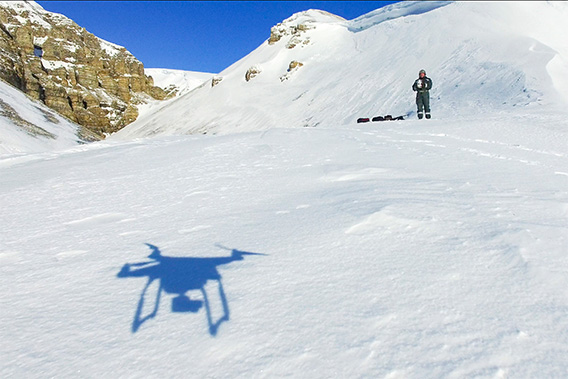
Flying a drone Svalbard: principally possible – but there are rules.
If you want to fly a drone in Svalbard, then you need to make sure you know the regulations. Check the Sysselmester’s website or the Spitsbergen guidebook, it has all the information you need to know 😉
On organised tours including cruises, there may be restrictions from the tour operator/ship owner beyond the legal regulations.
Adventdalen to become nature reserve
Adventdalen – or, to be more precice: its lower part – is to become a nature reserve. The proposal is now in the public hearing stage, available on the Sysselmester’s website. Until 15 October, all interested parties, organisations as well as individual persons, can give their input.
The process is about an area of 62 square kilometres, mainly tundra and the wide riverbed.
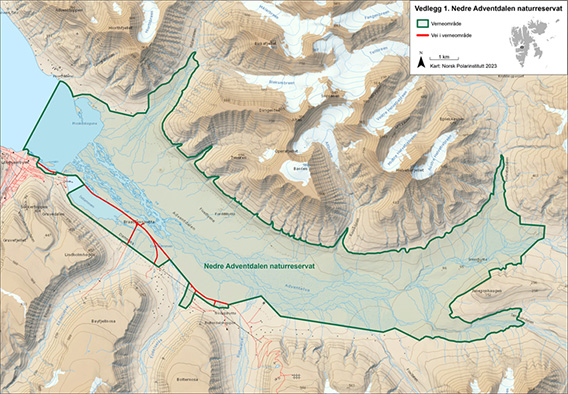
Lower Adventdalen is planned to become a nature reserve.
Map © Norwegian Polar Institute.
Adventdalen is one of Spitsbergen’s largest ice-free valleys with huge tundra areas and wetlands, that provide various habitats to a range of animal and plant species, including a number of rare ones. The protection of these habitats is the primary goal of the legal proposal.
The current proposal would, for most, not include significant changes, and that is probably exactly its point: to propose the current status quo. New infrastructure such as new roads, ways or buildings would be impossible. Existing buildings such as huts will enjoy grandfathering, including the possibility for minor repairs. Measures to maintain Isdammen (the drinking water lake) shall remain possible.

Tundra habitat in Adventdalen, here with mountain avens in flower.
The proposal does not include much in terms of restrictions for those who are on tour in the area, both private and guided tours. Most traffic is coming in shape of snow mobiles, obvioulsy during the winter season. Snow mobiles (and other motorised traffic) is, already now, only permitted on frozen, snow-covered ground (comment: controls on this might well be a bit stricter). These areas are used by birds only when the snow-melt has advanced quite a bit, so both uses, snow mobiles (and skiers, dog sledges …) are naturally separated in time, solving conflicts before they might come up.
Other kind of traffic on wheels will not be permitted on ground that is not snow-covered. This corresponds largely to today’s regulations and practice. It might, to some degree, limit the range of FatBikes which sometimes use dry river beds that are not covered by any vegetation.

Red-necked phalaropes in Adventdalen:
one of the more unusual species that can be found here.
As of today, dogs must be on a lead when outside. This is planned to become a bit stricter in the future, when leads must not be longer than 5 m during the breeding season.
Air traffic is to be restricted: no flights lower than 300 m, no landing, except SAR services and police or by special permission. The ban on flying will include drones in the new nature reserve.
The legal proposal is now in the hearing stage until 15 October 2023. After that, the law text will continue its journey through the institutions before it eventually may be turned into valid law.
Comment
One may get the impression that the proposed sanctuary / law will not change a lot. This is indeed the case, and this is good: based on the insight that the given status quo is actually pretty good – by far most of the area in question is intact, largely untouched arctic nature – the point is exactly to preserve the status quo. Activities that do not endanger the given status shall remain possible, even when some who quickly come up with strong opinions would rather prefer comprehensive bans on all sorts of activities, especially various sorts of traffic. There were not just a few in Longyearbyen who had feared exactly that in the upcoming Lower Adventdalen nature reserve, which until now is a very important area for snow mobile traffic – in the winter season, but not during the breeding season. Good thing that those who are in charge of the law proposal have realised this. There is no need to solve problems at the public’s expense if they just don’t exist.
Obviously, there are kinds of motorised traffic in Adventdalen, be it touristic, private or of any other sort, which one does not necessarily have to be fond of. But it needs more than that to justify far-reaching regulations. Comprehensive bans on activities that are important for many need to be well-founded. Not liking something is not good enough.
But what may easily put the environment – habitat, species diversity, … – at risk, such as new infrastructure and other significant artificial terrain changes, will not be possible anymore.
It is good to see that relevant institutions still today apparently are able to have a closer look at the local reality to understand the real needs of environmental protection, while listening to locals and others, wherever relevant, and not make peoples’ lives difficult without any real reason.
Nuclear power for Longyearbyen?
A nuclear power plant for Longyearbyen, a place with less than 3000 inhabitants?
That is indeed a creative idea.
Background is the discussion about the future of Longyearbyen’s energy supply, which is supposed to be reliable and (preferably) green. One may almost get the impression that this discussion is almost as old as Longyearbyen itself, and it has been issue on this page already more than once. Until now, Longyearbyen’s electricity and warmth comes from an outdated coal power plant, which definitely is neither reliable nor green.
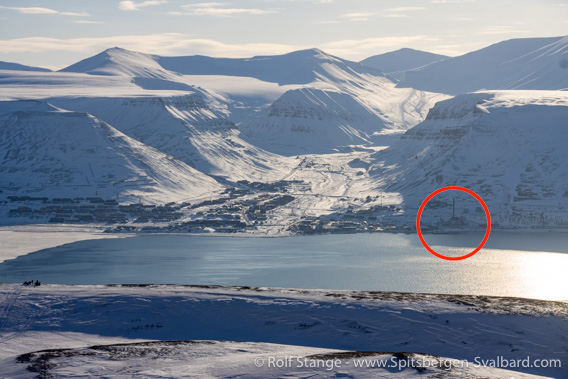
Longyearbyen with coal power plant (circle).
The Norwegian Fremskrittsparti (“Progress party”, FrP) has now contributed to the debate with a fantastic idea, namely the request to consider nuclear power, according to Svalbardposten.

This is how Longyearbyen might look like in the future,
according to the Norwegian Fremskrittsparti (photo composition, this author).
It would be Norway’s only nuclear power plant.
Comment
None 🙂
New photo- and panorama pages
The voyage with SV Antigua that we finished on 8th June was fantastic, amongst others due to the amazing weather that we had throughout the trip. So it is definitely worthwhile to join the trip by clicking through the photo galleries that you can access from this page (the actual galleries are on two pages that are linked on that first page).

SV Antigua in Hornsund.
And while I was at it, I gave a face lift to several pages dedicated to places that we have been to on the recent trip. This is about the “Spitsbergen panorama pages”. The following pages got some significant improvements such as new panoramas, photo galleries and maps and it is definitely worth having a look and taking a little virtual trip to the Arctic:
- The peninsula Treskelen in Hornsund.
- Gnålodden with the trapper hut and surroundings, also in Hornsund.
- Biskayarhuken on the north coast, with material mostly from early June 2022.
Violation of sanctions found by Norwegian customs in Svalbard
After the beginning of the large-scale Russian invasion of the Ukraine in February 2022, Norwegian customs officers were soon stationed in Longyearbyen. This was done because it was feared that Spitsbergen could be used to bypass sanctions against Russia. There is ship and airtraffic between both Russia and western countries and Spitsbergen, but no presence of custom authorities – until April 2022, when Norwegian customs were established in Longyearbyen.

Luggage in the airport of Longyearbyen: in earlier times, only the polar bear kept a watchful eye. Today, Norwegian custom officers are doing that.
Still, custom authorities are not (yet) too visible at Longyearbyen airport, but they are there and they do, for example controls, sample tests with drug sniffer dogs. Next to good relevant for the sanction regime, illegal drugs are an issue the custom authority wants to work on.
But the airport is not the only place for the Norwegian custom officers. The port, Barentsburg and ships in the 12 mile zone may and do get official visits, often with logistical support from the Sysselmester or the coast guard.
During such controls, officers found evidence for violation of sanctions against Russia, as Svalbardposten wrote.
Further details, including what was found and where and when, were not released.
New placenames: Negerpynten becomes Svarthuken
Three placenames in the southeast of Edgeøya were changed recently by the Placenames commission of the Norwegian Polar Institute. Negerpynten, Negerfjellet and Negerdalen have raised more than one eyebrow in recent years – more than 400 years after they first appeared in 1616 on English maps, according to the standard source “The Placenames of Svalbard”. The original names probably referred to the dark appearance of the landscape, which is connected to the geology (Triassic sediments).

Cape and mountain were until recently known as Negerpynten and Negerfjellet.
With Svarthuken and Svarthukfjellet, they have now officially got considerably more agreeable designations.
After growing controversies in recent years, the names were now officially changed to Svarthuken, Svarthukfjellet and Svarthukdalen.
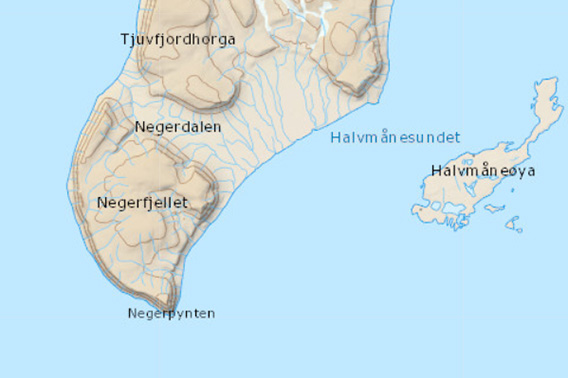
The old names on the official map (Toposvalbard). © Norwegian Polar Institute.
Isbjørn II aground in Borebukta
The small passenger vessel Isbjørn II ran aground on Monday in Borebukta. After a while, the Captain decided to make a Mayday call and 11 passengers and 4 crew members were evacuated by helicopter. Nobody was injured, all persons are well.
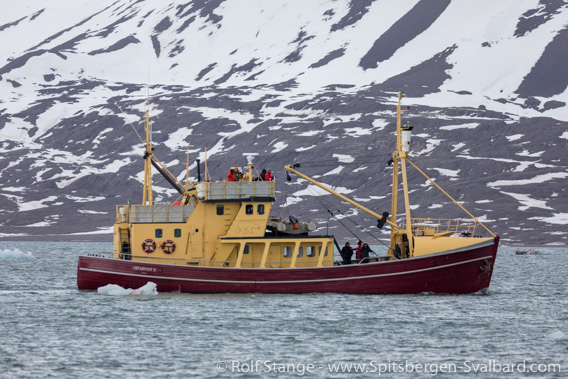
Isbørn II (archive image, 2018).
The ship itself was towed to Longyearbyen on Tuesday. The vessel appears to be undamaged. A small amount of diesel (or a similar liquid) was initially observed on the water near the grounding site, but according to the Sysselmester, it was only a small volume that escaped into the environment without doing any harm. How exactly this could happen is unclear, it may have happened in connection to the strong listing of the grounded ship during low tide.
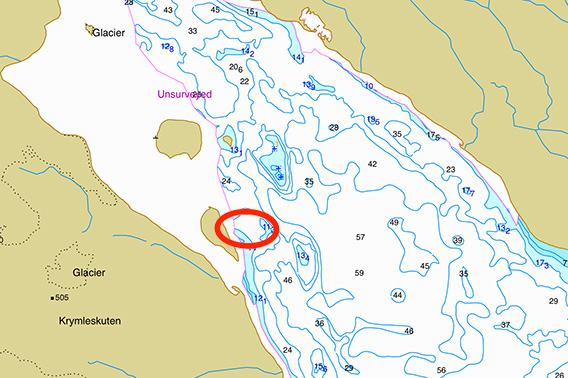
The relevant area in Borebukta. The exact position of the grounding was not published.
Screenshot of an electronic chart, processed.
The case is remarkable for several reasons. First of all, it is not to happen at all in the first place. Secondly, it is not the first time that Isbjørn II ran aground in this very position – the same thing had actually happened before in the very same place. And then, there are contradictory statements regarding the exact position of the grounding. The area appears to be well charted on modern sea charts. Some say, however, that the grounding happened in a position where the chart indicates a depth of 11 metres (right part of the oval), a depth that – if correct – would be safe for small vessels such as as Isbjørn II. Should this be correct, then the chart, although seemingly detailed and compiled according to modern standards, would be dangerously faulty. But given current public information, it can not be excluded either that Isbørn II ran aground in shallow waters near the small island (left part of the oval). In this case, navigation errors would likely have played an important role in the current incident.
Next to Isbjørn II, there are several other boats that have kissed the bottom in this area since 2015 (and, possibly, before). In at least one case, one involved person said to have informed the Norwegian coastal authority, which is responsible for the charts, about faulty depth information.
Without detailed knowledge about the exact position of the grounding, it is impossible to judge what really happend and if the chart quality actually was a factor or not.
Black labour in Longyearbyen
Employment relations in the grey or even black zone do also exist in Longyearbyen. Recently, the regional employment protection agency made controls in Longyearbyen and, in a number of cases, found evidence for black labour. Employees concerned are mainly of non-Norwegian origin, and often employed in house cleaning. Employees were found to have worked more hours than they were (officially) getting paid for, and wages were often well below usual levels. According to Svalbardposten, 50 kroner (currently approximately 4.25 Euro9 were paid per hour, while Norwegian standard wages would be at least 205 kroner (17.42 Euro).
The employment protection agency can only rise attention and bring cases to the attention of relevant authorities, such as the tax authority. Another difficulty is that some relevant Norwegian legislation is not in force in Svalbard. Due to the Spitsbergen Treaty system, not all Norwegian laws are automatically in force in Svalbard, but they have to be brought into force explicitly by Norwegian legislators.
There are, of course, house cleaning businesses in Longyearbyen that take care well of their employees and respect both legislation and reasonable ethical standards. Some of these companies are now raising criticism against their grey-zone competitors and against the lack of enthusiasm on behalf of the Norwegian government. Gustav Halsvik, director of ISS, is quoted saying that he thinks of the lack of action of Norwegian authorities as public racism, considering that Norwegian employees are hardly concerned.

Black labourn exists in Longyearbyen not only within house cleaning, but for example also in the catering trade. The cook of this delicious meal was most likely not getting paid according to standard wages!
Similar problems are known to exist in Longyearbyen also in industries such as transportation, building and restaurants.
Longyearbyen’s population is growing and becoming more Norwegian
Statistics Norway (statistisk sentralbyrå, SSB) have published new data describing Svalbard’s population. As of January 01, 2023, a total resident population of 2,897 people was registered in Spitsbergen’s five settlement, starting with 10 folks in the Polish research station in Hornsund.
Most people live in Longyearbyen and Ny-Ålesund, which are counted together in the official statistics. These settlements had a total population of 2,530 as of the beginning of 2023. During the fall of 2022, this number had increased: 234 people who had moved away were move than compensated by 352 who moved to Longyearbyen (and Ny-Ålesund, but most of them will definitely have moved to Longyearbyen).
These figures indicate high fluctuation: nearly 10 per cent of the total population have moved in and out in just half a year. High fluctuation has always been a characteristic of Longyearbyen’s population. Many come on contract and leave again as soon as the work is done, for example when a building project is finished or when the season is over.
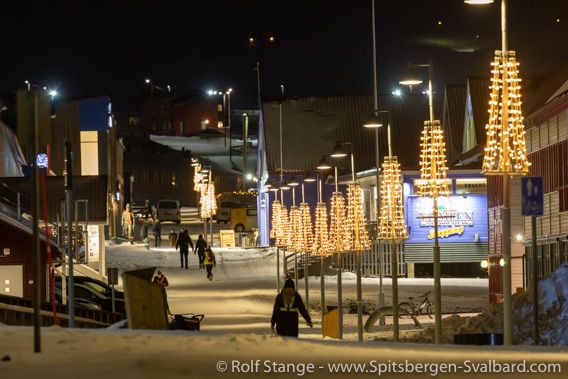
Longyearbyen’s population in early 2023:
some went away, more moved in.
The statistics give away some more interesting details: the percentage of women has increased slightly up to 47.1 %. Also the percentage of Norwegian citizens has increased a little bit, but over the years it has been stable and close to 65 %. Amongst the non-Norwegian citizens, the proportion of people from EU-countries outside Scandinavia has grown a little bit.
At the same time, the percentage of children and young people has decreased. Especially when considering young children (younger than school age), the decrease is quite pronounced, from 170 in 2013 to only 109 in 2023. During the same period, the age group 20-44 has seen the strongest increase, from 49 % to 54 %.
Barentsburg and Pyramiden
Also the Russian settlements of Barentsburg and Pyramiden are covered by the Norwegian statistics. Also here, both are counted together, but there is not really a permanent population in Pyramiden, where only a small group of a few dozen people are present for periods of usually a couple of months or so to keep the place running.
Statistics show a record population also in Barentsburg and Pyramiden, but with 357 people in January 2023, it is a negative one – never have fewer people been registered in Spitsbergen’s Russian settlements. According to former head of Trust Arktikugol’s tourism section in Barentsburg Timofey Rogozhin as quoted by The Barents Observer, most Ukrainians have left since the beginning of the Russian war. Until early 2022, a high percentage of coal miners and others in Barentsburg were from the Ukraine.
Victory day celebrated in Barentsburg with large military-style parade
Victory day celebrations to commemorate the Soviet Union’s victory over Nazi Germany were held not only in Russia, but also in Barentsburg. Such celebrations have traditionally been held there also in previous years, but they used to be of a civilian and cultural character.
This time, things went a different way. A large parade was held with all available and suitable vehicles – cars, snow mobiles and even a helicopter. Large flags and other Russian symbols, including ones of military character, were shown in large numbers. This is in strong contrast to previous years.
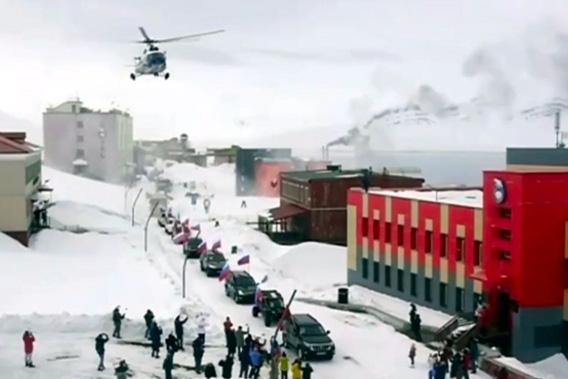
Victory day (2023) in Barentsburg: more of a military-style propaganda event
(photo: Trust Arktikugol social media).
A few weeks ago, the Norwegian news platform NRK revealed connections of the general consul in Barentsburg to the Russian military secret service GRU.
Several large companies in Longyearbyen including Hurtigruten Svalbard and Visit Svalbard have encouraged their employees not to visit Barentsburg, referring to private visits. Using local wifi is discouraged in Barentsburg because of data safety considerations, and care is advised when using mobile phone network. Both Norwegian and Russian mobile network are available in and around Barentsburg, but mobile phones may automatically connect to Russian network when Norwegian coverage is unavailable, according to Svalbardposten.
From Hamn i Senja to Andenes
Usually we prefer the passage on the inside of the island of Senja because the weather and sea conditions outside tend to be pretty rough. But on a good day like this, the outer passage allows one to visit lovely little harbours such as Hamn i Senja, located on a couple of skerries just off the coast of Senja.
Later, again there was no wind to put up the sails, but the good thing was that this mean flat seas, so we went out to the edge of the continental shelf near Andenes, the famous sperm whale place. And we were lucky!
- gallery anchor link: #gallery_2670
Click on thumbnail to open an enlarged version of the specific photo.
Guidebook “Spitsbergen-Svalbard”: ebook-version available!
The guidebook “Spitsbergen-Svalbard” is now for the first time available in an ebook-format!
Through five updated editions, the guidebook has evolved into what many professional colleagues refer to as the “Spitsbergen-bible”. But so much information on 608 pages does have some weight, which is obviously not always great when you are travelling.
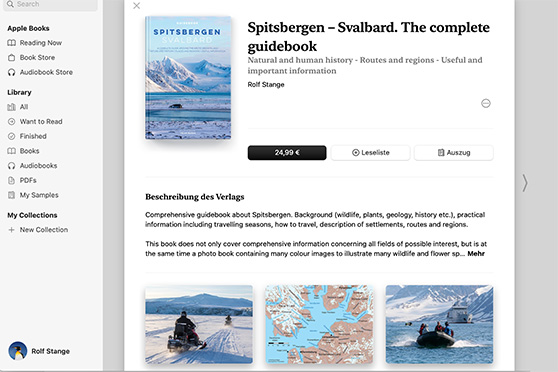
The guidebook Spitsbergen-Svalbard is now digitally available on Apple Books.
No problem, because now there is an ebook version available. To start with the bad news: it is currently only available on Apple Books. This is not what I want, but there are technical reasons for this.
Here is the link to the English version of the guidebook “Spitsbergen-Svalbard” in Apple Books. You can also find the German version of the book on Apple Books.
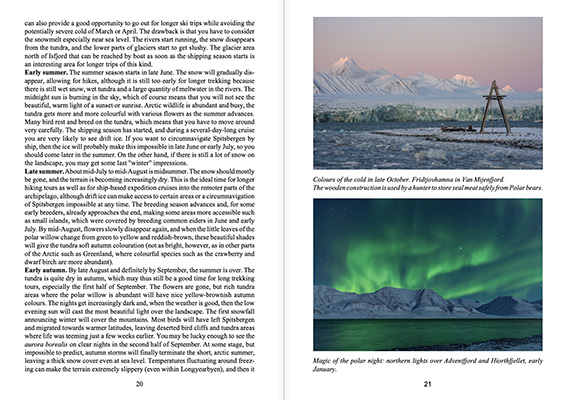
The eBook-version of the Spitsbergen-guidebook is as richly illustrated as the print edition.
The contents of the ebook and the printed edition are identical. The printed version is and remains available, of course.
News-Listing live generated at 2025/May/09 at 14:40:08 Uhr (GMT+1)
